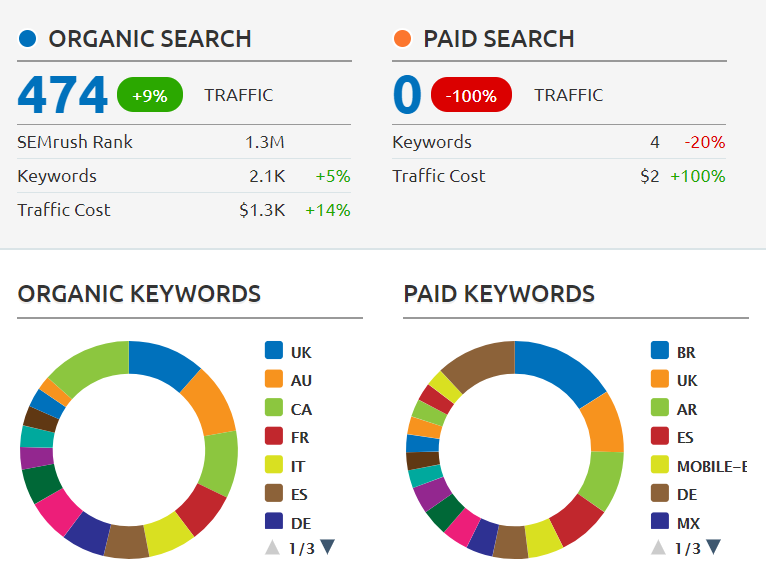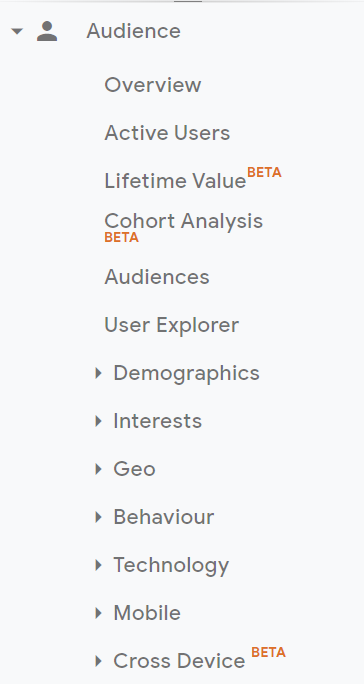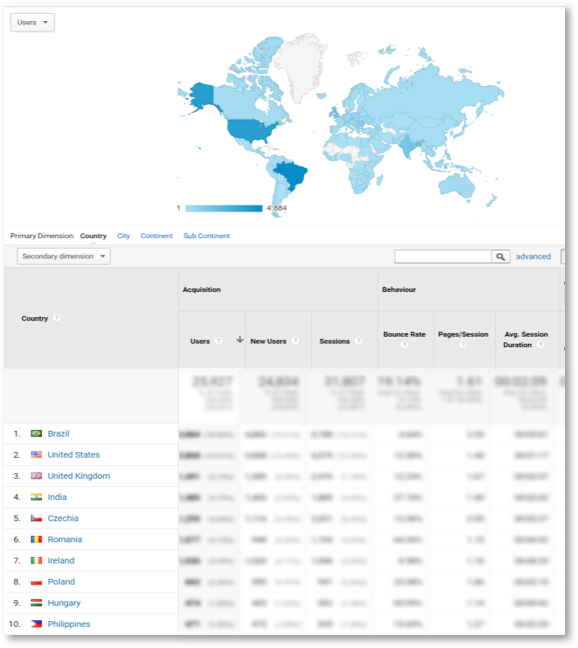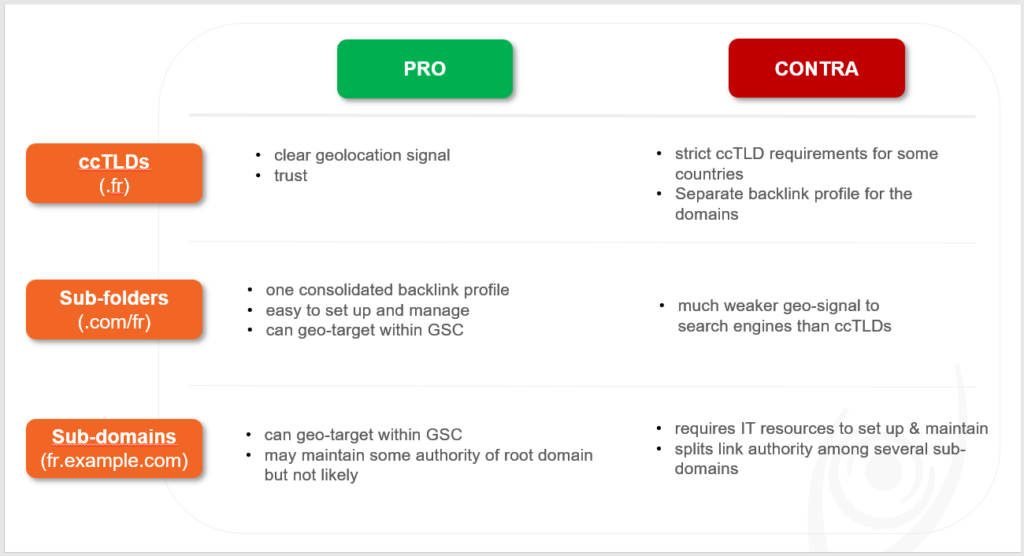Threats to International SEO: The preparation & how to plan and research
07. 02. 2020 AutorThe world of international search engine optimization is full of misunderstandings. How do you find your way around when planning an international website? We show you how not to fall into the most common mistakes!
A couple of weeks ago I had the great opportunity to talk and present at Webtop100 conference.
Topic: International SEO.
Time: 20 minutes.
With every day passing by, one thing became more and more clear: that’s not enough time for everything I planned and prepared and want to tell about International SEO. For the presentation, I had to cut out a lot of material. And it was really hard. So I decided to use the preparation material for an article. And this is what you are reading right now.
International SEO is an evergreen topic at SEO conferences. But why? Because International SEO can seem very confusing and consequently there’s a need for this topic.
But I argue that it is not international SEO itself that is confusing (no more than regular SEO is), but the amount of misunderstanding around it.
Along with the confusion and misunderstandings often goes insufficient and weak preparation. A website that is challenged with international SEO usually is so, because the owner decided to expand into new markets online. The tactic is to sell new or existing products in different countries or to offer their services online. To sum it up, business owners basically want to reach audiences with different languages or in multiple regions and grow their business easily with this online expansion. Typical examples for expanding online businesses would be online shops, leisure and tourism facilities such as hotels, accommodations, restaurants, museums or B2B companies from the areas of SaaS, Iaas or PaaS.
But international SEO is just one part of this process. There’s a lot more to bear in mind, especially before you should even start thinking about how international SEO works.
Of course, before we continue with international SEO, we need to prepare the expansion. And what is one of the first things that are done wrong? Selecting the market.
Selecting the market
The good news is: as SEO consultants we know tools and simple analysis from SEO, which can help us in this step.
SEO analysis can help you to
- Analyze target groups
- Keywords and rankings
- Traffic and conversions
- And most important – estimate your potential in your target countries.
For many businesses out there it can be easy, because a lot of information you might already have. Especially if you have an English or German page.
The first check is for you, if you already have (data from) international users: SEMrush
If you’d like to see for how many keywords you are already ranking in different countries.
- Use the SEMrush domain analytics report to create an overview of your domain.
- On the doughnut chart in the left bottom corner of the report, click the slice you want to analyze. Now you will see a more detailed view and you can see for which keywords your website is already ranking for in this market.

Google Analytics
We want to find out in which markets we already have customers, who they are, how they behave and interact with our website and products.
Click on the Audience report and then the Geo report for example.

You will see this world map and a table with information about acquisition or behavior in different markets.

From here you can narrow down your analysis and analyze the markets more deeply in order to find out if they could be of any potential or value for your business.
Similar to SEMrush and Google Analytics are the Google Search Consoles reports – you can analyze not only the positions of your website in different countries but also how well you are currently performing in organic search.
No matter which tools you decide to work with– it is really important to understand and estimate your potential in the target countries. And a lot of data you already have in Google Analytics. And if you don‘t see any transactions from users from foreign countries, it doesn‘t mean there‘s no potential for you. It can just mean, the website is not localized and optimized for them.
When analyzing your data, these are some questions to keep in mind:
- Which keywords did the visitors use and which pages did they visit?
- Which services or products did the audience end-up buying?
- How high are the conversion volume and their conversion rate compared to your main country or language?
In general, the 3 tools I mentioned in this article can help to get a deep insight into the current performance of the website on the international market. But it is a different story if your website doesn‘t have yet any traffic from other countries.
International keyword research
You don’t see any valuable traffic from foreign visitors in Google Analytics? No problem, in order to estimate your potential on the market and find out whether a particular market is worth going for, you should do keyword research (but you should do it also when you have data from international users!). By doing keyword research, you can find out the most relevant keywords your international customers use in the local search engine. You need to understand how and whether people search for your product or services online.
Further research
For Czech websites, websites that are not in English or you just don’t have any data in GA you can use:
- Google ConsumerBarometer
- Marketfinder
- Euromonitor
- Statista
- …
Further Analysis & preparation
Competitor analysis:
You must know who you are fighting against in the new market. Run a quick analysis of your competitors in the locations you are targeting.
What to do?
- Identify competitors on the new market
- Find their keywords and analyze their content: find out which keywords are currently sending organic traffic to your competitors’ sites
- Analyze their backlinks: One of the most significant parts of a competitive analysis is figuring out where your competitors are winning their backlinks from and using that information to build high-quality links for your website.
After all research and analysis it’s time to set up a strategy – what you should consider when setting up an expansion strategy:
- Goals and objectives
- International marketing strategy: branding, positioning…
- Product strategy: Test your product in the target country to ensure success and determine if adjustments are needed. Define USPs, develop pricing..
- Partnerships: Will you need a strong partner for sales, marketing or market research to help you with their expertise?
- Market entry strategy
- Roadmap for expanding online step-by-step
- …
Be critical.
Expanding your business internationally can open countless doors for you. For a successful project it is crucial to take a hard, cold look at your business and preparation and ask yourself: IS MY BUSINESS READY TO EXPAND TO NEW MARKETS?
- Do you have enough time for everything?
- Can you cover the costs?
- Have you done all the necessary research?
- Do you know all future challenges?
- Do you have a strong partner for marketing or sales with expertise in the new market?
- Are you ready logistically?
- How will your team be composed (internally/outsourced)?
- Do you need to rethink your website?
Make sure to identify the implications of going international from the start, otherwise, you might end up wasting your time and resources afterward since you will learn too late that there’s no way your sales are going to be as high to repay the needed initial investment on the new market.
SEO strategy
And also you need of course not only a business strategy but also an SEO strategy – that’s why we are here today. When all preparation and research are done you will need to start preparing an SEO Strategy for your new market.
Why creating an international SEO strategy?
As I mentioned earlier – when you develop and start optimizing for other languages or countries you cannot simply duplicate what you already have in your current site. Of course, this will be used as an input but you cannot ignore the specific characteristics of the countries and language audiences that you will target: You need to take them into consideration to establish an effective online presence and SEO strategy.
Domain threats
One of the things that will arise sooner or later is to identify how you would target your international audience. That’s why now we want to cover domain threats.
For choosing the proper domain setup, you have to take into consideration all the information you’ve learned before in the research and look at it with your online business strategy and defined goals in mind.
The business view on choosing the domain is pretty clear, simple and 100% based on your business strategy:
- The target market is entirely regional/local. → Choose ccTLDs (works for example usually for Online shops).
- The target market is international and this will be the only website. → Choose gTLD like .com
- The target market is international and you are trying to scale into new markets.
- Focus is on multiple languages → gTLD + subfolders like .com/fr.
- Focus is on multiple regions → ccTLD like .fr (works for example usually for Online shops)
As an SEO consultant, I must say, it’s not that easy. SEO view on this matter is a bit more complicated.
Even though the official word, according to this video from Google, is that Google treats subdomains and subfolders equally.
Why do so many SEOs disagree on this? – It’s all about the effort involved.

For those who are more visual learners (I love this visualization which I stole from Moz):

- ccTLDs are a good choice if you’re Godzilla. If branding isn’t a problem for you, if you have your own PR, if building up domain authority and handling multiple domains is no big deal, then ccTLDs are the way to go.
- Subdirectories are a good choice if you’re MacGuyver. You’re able to get the job done using only what you’ve got.
- Subdomains are a good option if you’re Wallace and Gromit. Somehow, everything ends well despite the many bumps in the road.
There’s no one-size-fits-all approach. You need to take a cold, hard look at your business and decide what’s best for your goals, business, and target group.
The term backlinks occured a couple of times now, enough to stop here for a moment and cover the topic backlinks and international link building.
Excursus – Backlinks: Where are your backlinks primarily coming from?
For international websites (and also other websites) you need relevant, high-quality links to the different versions of your site from other local websites if you want to rank in Google’s top ten search results. Applies for any language and region that you target.
Let’s imagine a website is getting most of its backlinks from domains with the .de ccTLD and German content. The local signals will help that the website will be associated with the German market.
Hint from my side: Building backlinks and establishing a strong backlink profile will be more challenging and consume more resources if you choose different ccTLDs, of course.
Talking about resources – it’s not only about how easy it is but also how much link building costs (My colleague recently wrote an article about this, in Czech language only).

Be aware that the costs for link building differ greatly from country to country and is something that should definitely influence your decision about ccTLDs or subfolders since ccTLD requires a separated backlink portfolio as I mentioned before.
Enough with link building – another very important part of your website will be the content on it…and this content needs to be localized!
You can read more about this threats to international SEO in part 2 of this article which you can find here online soon!










Komentáře